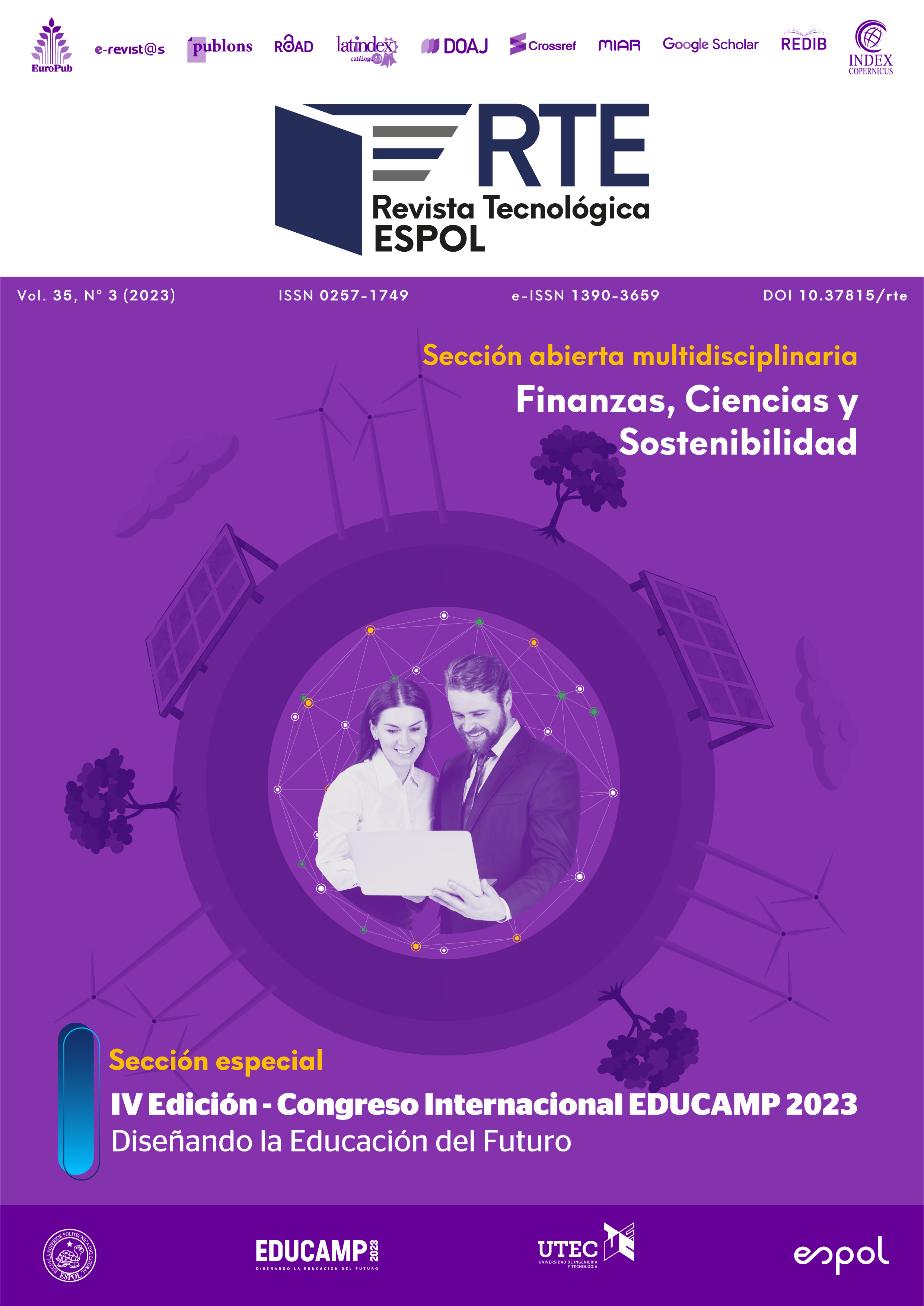Cuando se aborda un problema de pronóstico a través de modelos de regresión, se espera contar con el número óptimo de variables explicativas, y de no ser así, aplicar alguna técnica para reducir la dimensionalidad del problema. Actualmente, existe una variedad de métodos para seleccionar las características o variables explicativas, que a su vez caen dentro de distintas categorías, haciendo complejo sólo seleccionar el método idóneo para una aplicación específica. Entonces, el objetivo de esta investigación es presentar una metodología multicriterio para la selección óptima de las variables explicativas de un modelo de regresión, utilizando los métodos de selección de características como los criterios de decisión, y las variables explicativas como las alternativas. La metodología se ilustra a través del conjunto de datos de una planta solar fotovoltaica del Instituto Nacional de Estándar y Tecnología (NIST por sus siglas en inglés), de los Estados Unidos, tomando como variable objetivo a la energía eléctrica AC generada por la planta, y como variables explicativas a la irradiancia solar, la temperatura de los paneles solares, la temperatura ambiente, y la velocidad del viento. Se consideran métodos del tipo “filtro”, del tipo “envoltura”, y del tipo “incrustado”. Utilizando la técnica multicriterio TOPSIS, se logró seleccionar la mejor variable para representar a la irradiancia solar con una ponderación de 1,00, a la temperatura de los paneles solares con 0,182, a la temperatura ambiente con 0,204, y a la velocidad del viento con 0,129.

Esta obra está bajo una licencia internacional Creative Commons Atribución-NoComercial 4.0.
Referencias
Cielen, D., Meysman, A., & Ali, M. (2016). Introducing Data Science. Shelter Island, NY: Manning Publications Co.
Datasheet. (04 de Mayo de 2023). Datasheet. Obtenido de https://www.datasheets.com/en/part-details/nu-u235f2-sharp-46351940#datasheet
Eltarabishi, F., Omar, O., Alsyouf, I., & Bettayeb, M. (2020). Multi-Criteria Decision Making Methods And Their Applications– A Literature Review. Proceedings of the International Conference on Industrial Engineering and Operations Management (págs. 2654-2663). Dubai, UAE: IEOM Society International.
Explorium. (24 de June de 2023). Explorium. Obtenido de Access the right data to extend your go-to-market needs: www.explorium.ai.
Frederick, O., Maxwell, O., Ifunanya L, O., Udochukwu V, E., Kelechi C, O., Ngonadi O, L., & Kayode Idris, H. (2019). Comparison of Some Variable Selection Techniques in Regression Analysis. American Journal of Biomedical Science & Research, 281-293. DOI: 10.34297/AJBSR.2019.06.001044.
Gebreyesus, Y., Dalton, D., Nixon, S., De Chiara, D., & Chinnici, M. (2023). Machine Learning for Data Center Optimizations: Feature Selection Using Shapley Additive explanation (SHAP). Future Internet MDPI, https://doi.org/10.3390/fi15030088.
Hackeling, G. (2014). Mastering Machine Learning with scikit-learn. Birmingham, UK: Packt Publishing Ltd.
Ishizaka, A., & Nemery, P. (2013). Multi-Criteria Decision Analysis - Methods and Software. West Sussex, United Kingdom: John Wiley & Sons, Ltd.
Jomthanachai, S., Wong, W., & Khaw, K. (2022). An application of machine learning regression to feature selection: a study of logistics performance and economic attribute. Neural Computing and Applications, 15781–15805. https://doi.org/10.1007/s00521-022-07266-6.
Jović, A., Brkić, K., & Bogunović, N. (2015). A review of feature selection methods with applications. 38th International Convention on Information and Communication Technology, Electronics and Microelectronics (MIPRO) (págs. 1200-1205). Opatija, Croatia: IEEE Xplore. doi: 10.1109/MIPRO.2015.7160458.
Lee, W. M. (2019). Python Machine Learning. Indianapolis: John Wiley & Sons, Inc.
Li, X., Sha, J., & Zhong-Liang, W. (2018). Application of feature selection and regression models for chlorophyll-a prediction in a shallow lake. Environmental Science and Pollution Research, 19488–19498. https://doi.org/10.1007/s11356-018-2147-3.
Li, Y., Li, G., & Guo, L. (2021). Feature Selection for Regression Based on Gamma Test Nested Monte Carlo Tree Search. Entropy MDPI, https://doi.org/10.3390/e23101331.
McKinney, W. (2018). Python for Data Analysis. Sebastopol, CA: O’Reilly Media, Inc.
Mesafint Belete, D., & D.H, M. (2020). Wrapper Based Feature Selection Techniques On EDHS-HIV/AIDS Dataset. European Journal of Molecular & Clinical Medicine, 2642-2657.
National Institute of Standards and Technology. (04 de Mayo de 2023). National Institute of Standards and Technology. Obtenido de NIST: https://catalog.data.gov/dataset/nist-campus-photovoltaic-pv-arrays-and-weather-station-data-sets-05b4d
Navlani, A., Fandango, A., & Idris, I. (2021). Python Data Analysis. Birmingham, UK: Packt Publishing Ltd.
Otchere, D., Arbi Ganat , T., Ojero, J., Tackie-Otoo, B., & Taki, M. (2022). Application of gradient boosting regression model for the evaluation of feature selection techniques in improving reservoir characterisation predictions. Journal of Petroleum Science and Engineering, https://doi.org/10.1016/j.petrol.2021.109244.
Papathanasiou, J., & Ploskas, N. (2018). Multiple Criteria Decision Aid - Methods, Examples and Python Implementations. Cham, Switzerland: Springer Nature Switzerland AG.
R, D., Paul, I., Akula, S., Sivakumar, M., & Nair, J. (2020). F-test feature selection in Stacking ensemble model for breast cancer prediction. Procedia Computer Science, 1561-1570. http://dx.doi.org/10.1016/j.procs.2020.04.167.
Raschka, S., & Mirjalili, V. (2017). Python Machine Learning - Machine Learning and Deep Learning with Python, Scikit-Learn, and TensorFlow. Birmingham: Packt Publishing Ltd.
Ratner, B. (2017). Statistical and Machine-Learning Data Mining - Techniques for Better Predictive Modeling and Analysis of Big Data. Boca Raton, FL: CRC Press Taylor & Francis Group.
Sahoo, B., Behera, R., & Pattnaik, P. (2022). A Comparative Analysis of Multi-Criteria Decision Making Techniques for Ranking of Attributes for e-Governance in India. International Journal of Advanced Computer Science and Applications, 65-70. https://dx.doi.org/10.14569/IJACSA.2022.0130311.
SolarDesignTool. (04 de Mayo de 2023). SolarDesignTool. Obtenido de SolarDesignTool site: http://www.solardesigntool.com/components/inverter-grid-tie solar/PVPowered/137/PVP260kW/specification-data-sheet.html
Triantaphyllou, E., Shu, B., Nieto Sanchez, S., & Ray, T. (1998). Multi-Criteria Decision Making: An Operations Research Approach. Encyclopedia of Electrical and Electronics Engineering, 175-186.
Velasquez, M., & Hester, P. (2013). An Analysis of Multi-Criteria Decision Making Methods. International Journal of Operations Research, 56-66. http://www.orstw.org.tw/ijor/vol10no2/ijor_vol10_no2_p56_p66.pdf.







